Shalini Gupta
age ~47
from Sunnyvale, CA
Shalini Gupta Phones & Addresses
- Sunnyvale, CA
- Union City, CA
- Columbus, OH
Name / Title
Company / Classification
Phones & Addresses
FIXNGIVE
Medicine Doctors

Shalini Gupta
view sourceSpecialties:
Internal Medicine
Work:
Shalini Gupta MD
24474 Goddard Rd, Taylor, MI 48180
3132927700 (phone), 3132925959 (fax)
24474 Goddard Rd, Taylor, MI 48180
3132927700 (phone), 3132925959 (fax)
Education:
Medical School
Christian Med Coll, Punjab Univ, Ludhiana, Punjab, India
Graduated: 1991
Christian Med Coll, Punjab Univ, Ludhiana, Punjab, India
Graduated: 1991
Procedures:
Arthrocentesis
Electrocardiogram (EKG or ECG)
Pulmonary Function Tests
Skin Tags Removal
Vaccine Administration
Electrocardiogram (EKG or ECG)
Pulmonary Function Tests
Skin Tags Removal
Vaccine Administration
Conditions:
Acute Bronchitis
Acute Myocardial Infarction (AMI)
Acute Pharyngitis
Acute Renal Failure
Aortic Valvular Disease
Acute Myocardial Infarction (AMI)
Acute Pharyngitis
Acute Renal Failure
Aortic Valvular Disease
Languages:
English
Description:
Dr. Gupta graduated from the Christian Med Coll, Punjab Univ, Ludhiana, Punjab, India in 1991. She works in Taylor, MI and specializes in Internal Medicine. Dr. Gupta is affiliated with Beaumont Hospital Taylor and Beaumont Oakwood Hospital & Medical Center.

Shalini Gupta
view sourceSpecialties:
Internal Medicine
Work:
Gupta & Goyal Mds
414 G St STE 240, Marysville, CA 95901
5307412393 (phone), 5307412396 (fax)
414 G St STE 240, Marysville, CA 95901
5307412393 (phone), 5307412396 (fax)
Education:
Medical School
Grant Med Coll, Univ of Mumbai, Mumbai, Maharashtra, India
Graduated: 2000
Grant Med Coll, Univ of Mumbai, Mumbai, Maharashtra, India
Graduated: 2000
Procedures:
Arthrocentesis
Destruction of Benign/Premalignant Skin Lesions
Electrocardiogram (EKG or ECG)
Vaccine Administration
Destruction of Benign/Premalignant Skin Lesions
Electrocardiogram (EKG or ECG)
Vaccine Administration
Conditions:
Anxiety Phobic Disorders
Diabetes Mellitus (DM)
Disorders of Lipoid Metabolism
Gout
Heart Failure
Diabetes Mellitus (DM)
Disorders of Lipoid Metabolism
Gout
Heart Failure
Languages:
English
Vietnamese
Vietnamese
Description:
Dr. Gupta graduated from the Grant Med Coll, Univ of Mumbai, Mumbai, Maharashtra, India in 2000. She works in Marysville, CA and specializes in Internal Medicine. Dr. Gupta is affiliated with Fremont Medical Center and Rideout Regional Medical Center.

Shalini Gupta
view sourceSpecialties:
Dermatology
Work:
Dermatology Laser & Vein Center
10600 Montgomery Rd STE 301, Cincinnati, OH 45242
5139859885 (phone), 5139859667 (fax)
10600 Montgomery Rd STE 301, Cincinnati, OH 45242
5139859885 (phone), 5139859667 (fax)
Education:
Medical School
Harvard Medical School
Graduated: 1996
Harvard Medical School
Graduated: 1996
Conditions:
Acne
Contact Dermatitis
Dermatitis
Skin Cancer
Varicose Veins
Contact Dermatitis
Dermatitis
Skin Cancer
Varicose Veins
Languages:
English
Description:
Dr. Gupta graduated from the Harvard Medical School in 1996. She works in Cincinnati, OH and specializes in Dermatology.

Shalini Gupta
view sourceSpecialties:
Obstetrics & Gynecology
Work:
Newark Beth Israel Medical Center Obstetrics/Gynecology
201 Lyons Ave STE L4, Newark, NJ 07112
9739267342 (phone), 9737058650 (fax)
201 Lyons Ave STE L4, Newark, NJ 07112
9739267342 (phone), 9737058650 (fax)
Education:
Medical School
King George's Med Coll, Lucknow Univ, Lucknow, Up, India
Graduated: 2003
King George's Med Coll, Lucknow Univ, Lucknow, Up, India
Graduated: 2003
Conditions:
Abnormal Vaginal Bleeding
Candidiasis of Vulva and Vagina
Complicating Pregnancy or Childbirth
Conditions of Pregnancy and Delivery
Diabetes Mellitus Complicating Pregnancy or Birth
Candidiasis of Vulva and Vagina
Complicating Pregnancy or Childbirth
Conditions of Pregnancy and Delivery
Diabetes Mellitus Complicating Pregnancy or Birth
Languages:
English
Spanish
Spanish
Description:
Dr. Gupta graduated from the King George's Med Coll, Lucknow Univ, Lucknow, Up, India in 2003. She works in Newark, NJ and specializes in Obstetrics & Gynecology.

Shalini Gupta
view sourceSpecialties:
Internal Medicine

Shalini Gupta
view sourceSpecialties:
Obstetrics & Gynecology

Shalini Gupta
view sourceSpecialties:
Dermatology
Internal Medicine
Internal Medicine
Education:
Harvard University(1996)
Isbn (Books And Publications)

Us Patents
-
Dynamic Adjustment Of Noise Filter Strengths For Use With Dynamic Range Enhancement Of Images
view source -
US Patent:8639050, Jan 28, 2014
-
Filed:Oct 19, 2011
-
Appl. No.:13/276896
-
Inventors:Shalini Gupta - San Francisco CA, US
Rajesh Narasimha - Plano TX, US
Aziz Umit Batur - Dallas TX, US -
Assignee:Texas Instruments Incorporated - Dallas TX
-
International Classification:G06K 9/40
-
US Classification:382261, 348607
-
Abstract:Dynamic adjustment of noise filter strengths for use with dynamic range enhancement of images is performed to produce better quality images by adapting dynamically to the image noise profile. Global and local brightness and contrast enhancement (GLBCE) is performed on a digital image to form an enhanced image. The GLBCE applies local gain values to the digital image based on local intensity values. A GLBCE gain versus intensity curve is determined for the enhanced image. A set of noise filter thresholds is adjusted in response to the GLBCE gain versus intensity curve to form a set of dynamically adjusted noise filter thresholds. The enhanced image is noise filtered using the set of dynamically adjusted noise filter thresholds to form a noise filtered enhanced image.
-
Detection Of Compounds That Affect Therapeutic Activity
view source -
US Patent:20060211022, Sep 21, 2006
-
Filed:Feb 23, 2006
-
Appl. No.:11/361415
-
Inventors:Shuqian Jing - Palo Alto CA, US
Francesca Civoli - Newbury Park CA, US
Shalini Gupta - Newbury Park CA, US
Daniel Halperin - Calabasas CA, US
Jason Pennucci - Santa Monica CA, US
Steven Swanson - Moorpark CA, US
Yan Yu - Thousand Oaks CA, US -
Assignee:Amgen Inc. - Thousand Oaks CA
-
International Classification:C12Q 1/68
G01N 33/53 -
US Classification:435006000, 435007100
-
Abstract:The present invention relates to methods of detecting compounds that affect the activity of a therapeutic substance or composition administered to a subject, and to reagents for use in such methods.
-
Multi-Sensor Based User Interface
view source -
US Patent:20180341333, Nov 29, 2018
-
Filed:Jul 24, 2018
-
Appl. No.:16/044239
-
Inventors:Pavlo MOLCHANOV - Santa Clara CA, US
Shalini GUPTA - Santa Clara CA, US
Kihwan KIM - Sunnyvale CA, US
Kari PULLI - Palo Alto CA, US -
International Classification:G06F 3/01
G06N 3/08
G06N 3/04
G06K 9/78
G06K 9/62
B60R 11/04
G01S 13/58
G01S 13/42
G01S 7/41
G01S 7/35
G06K 9/00 -
Abstract:An apparatus and method for gesture detection and recognition. The apparatus includes a processing element, a radar sensor, a depth sensor, and an optical sensor. The radar sensor, the depth sensor, and the optical sensor are coupled to the processing element, and the radar sensor, the depth sensor, and the optical sensor are configured for short range gesture detection and recognition. The processing element is further configured to detect and recognize a hand gesture based on data acquired with the radar sensor, the depth sensor, and the optical sensor.
-
Model-Based Three-Dimensional Head Pose Estimation
view source -
US Patent:20180075611, Mar 15, 2018
-
Filed:Nov 27, 2017
-
Appl. No.:15/823370
-
Inventors:- Santa CA, US
Shalini GUPTA - San Francisco CA, US
Iuri FROSIO - San Jose CA, US
Nagilla Dikpal REDDY - Palo Alto CA, US
Jan KAUTZ - Lexington MA, US -
International Classification:G06T 7/507
G06T 7/70 -
Abstract:One embodiment of the present invention sets forth a technique for estimating a head pose of a user. The technique includes acquiring depth data associated with a head of the user and initializing each particle included in a set of particles with a different candidate head pose. The technique further includes performing one or more optimization passes that include performing at least one iterative closest point (ICP) iteration for each particle and performing at least one particle swarm optimization (PSO) iteration. Each ICP iteration includes rendering the three-dimensional reference model based on the candidate head pose associated with the particle and comparing the three-dimensional reference model to the depth data. Each PSO iteration comprises updating a global best head pose associated with the set of particles and modifying at least one candidate head pose. The technique further includes modifying a shape of the three-dimensional reference model based on depth data.
-
Multi-Sensor Based User Interface
view source -
US Patent:20170060254, Mar 2, 2017
-
Filed:Mar 3, 2016
-
Appl. No.:15/060525
-
Inventors:- Santa Clara CA, US
Shalini GUPTA - San Francisco CA, US
Kihwan KIM - Sunnyvale CA, US
Kari PULLI - Palo Alto CA, US -
International Classification:G06F 3/01
G06K 9/62
B60R 11/04
G06N 3/04
G06N 3/08
G06K 9/00
G06K 9/78 -
Abstract:An apparatus and method for gesture detection and recognition. The apparatus includes a processing element, a radar sensor, a depth sensor, and an optical sensor. The radar sensor, the depth sensor, and the optical sensor are coupled to the processing element, and the radar sensor, the depth sensor, and the optical sensor are configured for short range gesture detection and recognition. The processing element is further configured to detect and recognize a hand gesture based on data acquired with the radar sensor, the depth sensor, and the optical sensor.
-
Model-Based Three-Dimensional Head Pose Estimation
view source -
US Patent:20170046827, Feb 16, 2017
-
Filed:Aug 12, 2015
-
Appl. No.:14/825129
-
Inventors:- Santa Clara CA, US
Shalini GUPTA - San Francisco CA, US
Iuri FROSIO - San Jose CA, US
Nagilla Dikpal REDDY - Palo Alto CA, US
Jan KAUTZ - Lexington MA, US -
International Classification:G06T 7/00
-
Abstract:One embodiment of the present invention sets forth a technique for estimating a head pose of a user. The technique includes acquiring depth data associated with a head of the user and initializing each particle included in a set of particles with a different candidate head pose. The technique further includes performing one or more optimization passes that include performing at least one iterative closest point (ICP) iteration for each particle and performing at least one particle swarm optimization (PSO) iteration. Each ICP iteration includes rendering the three-dimensional reference model based on the candidate head pose associated with the particle and comparing the three-dimensional reference model to the depth data. Each PSO iteration comprises updating a global best head pose associated with the set of particles and modifying at least one candidate head pose. The technique further includes modifying a shape of the three-dimensional reference model based on depth data.
-
Radar Based User Interface
view source -
US Patent:20160259037, Sep 8, 2016
-
Filed:Mar 3, 2016
-
Appl. No.:15/060545
-
Inventors:- Santa Clara CA, US
Shalini GUPTA - San Francisco CA, US
Kihwan KIM - Sunnyvale CA, US
Kari PULLI - Palo Alto CA, US -
International Classification:G01S 7/41
G01S 13/56
G01S 7/35
G01S 13/42 -
Abstract:An apparatus and method for radar based gesture detection. The apparatus includes a processing element and a transmitter configured to transmit radar signals. The transmitter is coupled to the processing element. The apparatus further includes a plurality of receivers configured to receive radar signal reflections, where the plurality of receivers is coupled to the processing element. The transmitter and plurality of receivers are configured for short range radar and the processing element is configured to detect a hand gesture based on the radar signal reflections received by the plurality of receivers.
-
Performing Object Detection Operations Via A Graphics Processing Unit
view source -
US Patent:20140270364, Sep 18, 2014
-
Filed:Sep 17, 2013
-
Appl. No.:14/029633
-
Inventors:- Santa Clara CA, US
Shalini GUPTA - San Francisco CA, US
Elif ALBUZ - Sunnyvale CA, US -
Assignee:NVIDIA CORPORATION - Santa Clara CA
-
International Classification:G06K 9/00
G06K 9/62 -
US Classification:382103
-
Abstract:In one embodiment of the present invention, a graphics processing unit (GPU) is configured to detect an object in an image using a random forest classifier that includes multiple, identically structured decision trees. Notably, the application of each of the decision trees is independent of the application of the other decision trees. In operation, the GPU partitions the image into subsets of pixels, and associates an execution thread with each of the pixels in the subset of pixels. The GPU then causes each of the execution threads to apply the random forest classifier to the associated pixel, thereby determining a likelihood that the pixel corresponds to the object. Advantageously, such a distributed approach to object detection more fully leverages the parallel architecture of the PPU than conventional approaches. In particular, the PPU performs object detection more efficiently using the random forest classifier than using a cascaded classifier.
Plaxo

shalini gupta
view sourceMumbaiBHARTI AIRTEL

Shalini Gupta
view sourcePerot SystemsPerot Systems
Classmates

Shalini Bridges (Gupta)
view sourceSchools:
Harvard Westlake School Los Angeles CA 1990-1997

Shalini Gupta | Alfred-Al...
view sourceYoutube
Myspace
Googleplus

Shalini Gupta
Work:
Computer Sciences Corporation (2008)
Education:
Aligarh Muslim University - BSC Mathematics
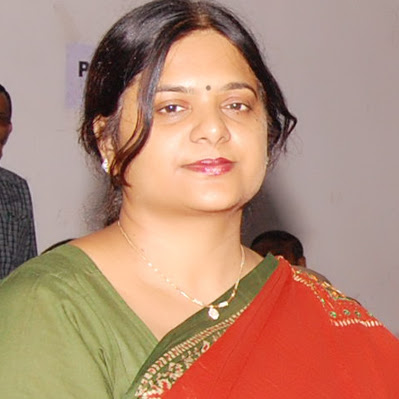
Shalini Gupta
Work:
Desh Bhagat University - Director General (1999)
About:
Dr. Shalini Gupta is an intrapreneur and manager par excellence. She is a dynamic and versatile personality, soft spoken but strong disciplinarian, a blend of managerial skills and academic intelligen...

Shalini Gupta
Education:
IGNOU - BCA

Shalini Gupta
Work:
Knight light luminers pvt. ltd. - Accounts manager (2012)
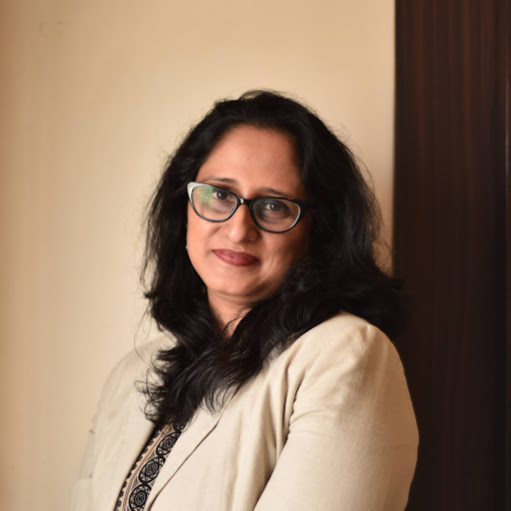
Shalini Gupta
Work:
Loop Mobile - DGM - Brand & Comm
Tagline:
Interesting and Fun

Shalini Gupta
Education:
Hindustan College of science and technology - MBA

Shalini Gupta
Education:
Kota university
About:
♥ S ♥ ~ SweeTz ♥ h ♥ ~ HavEnS ♥ a ♥ ~ AdoRabLe ♥ L ♥ ~ LovE ♥ i ♥ ~ ImagInaoR ♥ N ♥ ~ NaughTy ♥ I ♥ ~ ImePreCtIvE DaTS Me :D :))) ♥ !! ;) !!
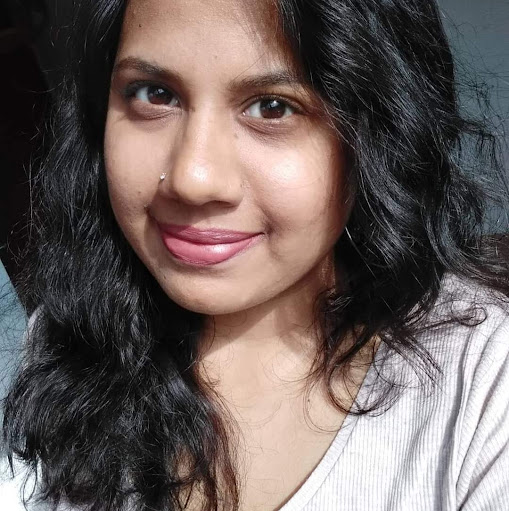
Shalini Gupta
Work:
Instastudio - Writer
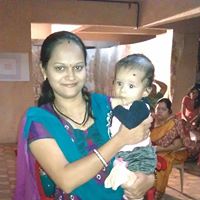
Shalini Gupta Prasad
view source
Shalini Gupta Agnihotri
view source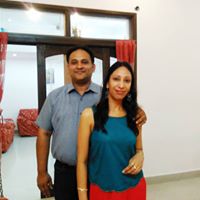
Shalini Aggarwal Gupta
view source
Shalini Prasad Gupta
view source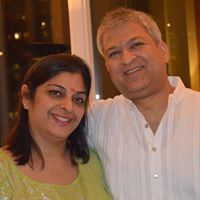
Shalini Dhodhi Gupta
view source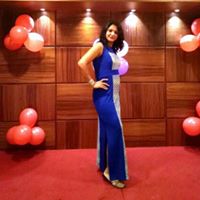
Shalini Gupta Aahi
view source
Shalini Chaurasia Gupta
view source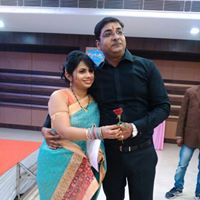
Shalini Santosh Gupta
view sourceNews

Voices of discontent grow louder
view source- A livid Shalini Gupta, another passenger, threatened to mobilise passengers and stage dharna and demonstration at the station if the train to Delhi was not arranged soon. Several pilgrims who came to know about the visit of railway minister Pawan Bansal, tried to reach the control room where the med
- Date: Feb 12, 2013
- Category: World
- Source: Google
Flickr
Get Report for Shalini Gupta from Sunnyvale, CA, age ~47










